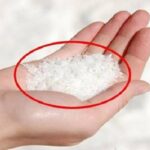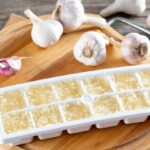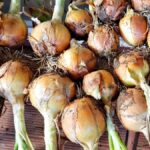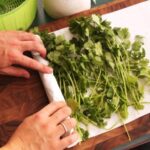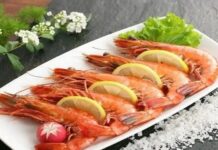Auramine O, or ‘Vang O’ in Vietnamese, is a banned substance that has no place in agriculture or animal husbandry. Yet, over the years, there have been concerns about food contamination with this toxic chemical.
Recently, China tightened its inspection of durians due to Auramine O concerns, once again raising alarms about this toxic substance in imported fruits entering their country.
What is Auramine O and why is it dangerous?
Auramine O is an industrial chemical that is prohibited from use in food products. It is commonly used in industries for dyeing, such as in textile fibers and wall paints…
The World Cancer Research Fund has classified Auramine O as a potential carcinogen, placing it in the group of substances with a high likelihood of causing cancer.
This chemical is strictly forbidden in food processing, animal farming, and agriculture. However, some unscrupulous individuals, driven by profit, still abuse it to impart an attractive yellow color to bamboo shoots, pickled vegetables, chicken meat, and even to prevent fungal and bacterial infections in crops.
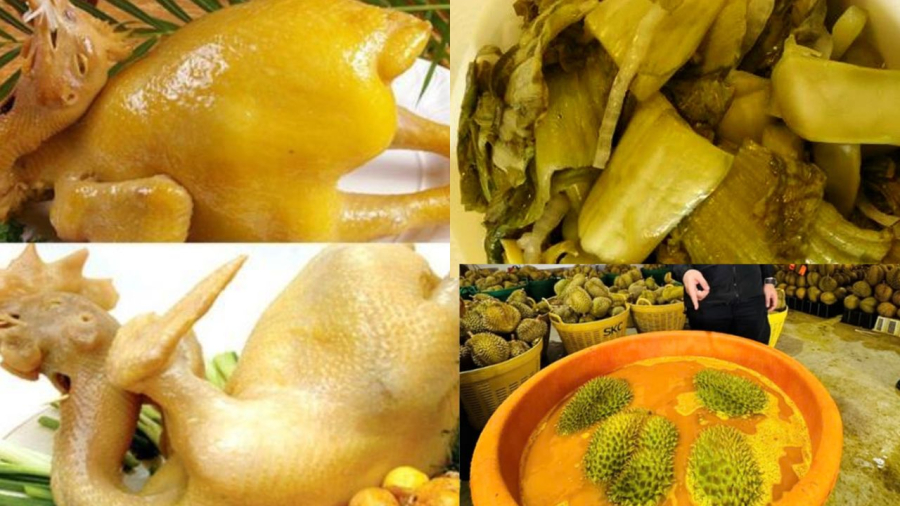
When ingested, Auramine O can cause severe harm to the human body. Individuals who come into contact with or consume food containing this chemical may experience nausea, diarrhea, liver and kidney damage, and respiratory issues if inhaled. Skin contact can also lead to irritation, redness, swelling, and even necrosis.
Research indicates that Auramine O is a fat-soluble substance, meaning it accumulates in the liver and causes initial damage there before affecting the kidneys and other internal organs. The risk of liver and kidney cancer, as well as chronic illnesses, is exceptionally high if this chemical is present in the body for extended periods.
How is Auramine O misused?
Auramine O can be mixed into animal feed, particularly for ducks and chickens, as it results in brighter yellow skin and fat. It may also be applied externally to the birds’ skin to achieve the same effect.
In agriculture, Auramine O may be added to crops during cultivation or after harvest to enhance the color of the produce. For example, durians treated with Auramine O exhibit a more appealing yellow color. Additionally, fruits soaked in a solution containing this chemical can be preserved longer due to its antifungal and antibacterial properties.
Processed foods are not exempt from the misuse of Auramine O. Pickled vegetables and bamboo shoots are typical examples of products that may contain this toxic substance to enhance their color and prolong their shelf life.
Bamboo shoots treated with Auramine O have a bright yellow appearance, while pickled vegetables maintain a vibrant yellow color without turning dark or mushy.

Tips for consumers to identify and avoid Auramine O-contaminated food:
To steer clear of purchasing food items tainted with Auramine O, consumers need to be vigilant and cautious during their selection process:
When buying chicken, opt for birds with naturally pale yellow skin. The chest, wings, and back may have a slightly deeper yellow hue. Look for thin, smooth skin without bruising and good elasticity. Healthy chicken fat should be a bright yellow color, neither pale nor an unnatural golden shade.
If the chicken’s skin has an abnormal yellow color but the fat is white, it may indicate that Auramine O has been applied externally. However, if both the fat and internal organs have an unusually deep yellow color, it suggests that the chicken was fed Auramine O during its life, and this toxin cannot be eliminated from the body, even with subsequent home-rearing.
In the case of bamboo shoots, natural ones tend to have a pale yellow or whitish hue and are tough, while those treated with chemicals are often brightly colored and brittle.
For other types of produce, such as durians and pickled vegetables, refrain from purchasing items with overly vibrant colors, as they may have been treated with harmful chemicals. Always prioritize products with clear origins and those that have undergone proper quality inspections.
Auramine O is a highly dangerous carcinogen that has been banned from the food industry. Nonetheless, some unscrupulous entities continue to use it to enhance the appearance of their products, posing a significant threat to consumers’ health.
Raising awareness, being vigilant in food selection, and demanding transparency in product origins are the best ways to safeguard ourselves and our families from this ‘invisible poison’ lurking in our daily meals.

























